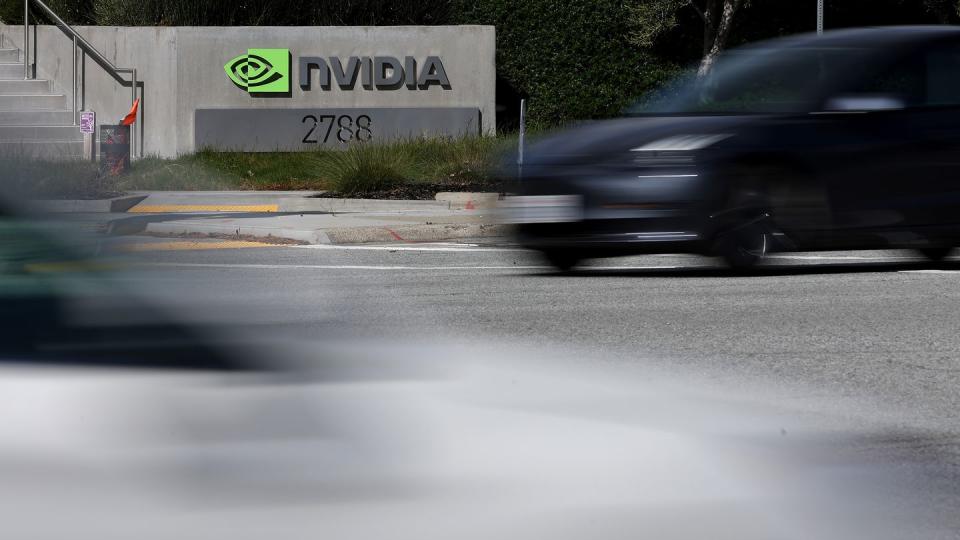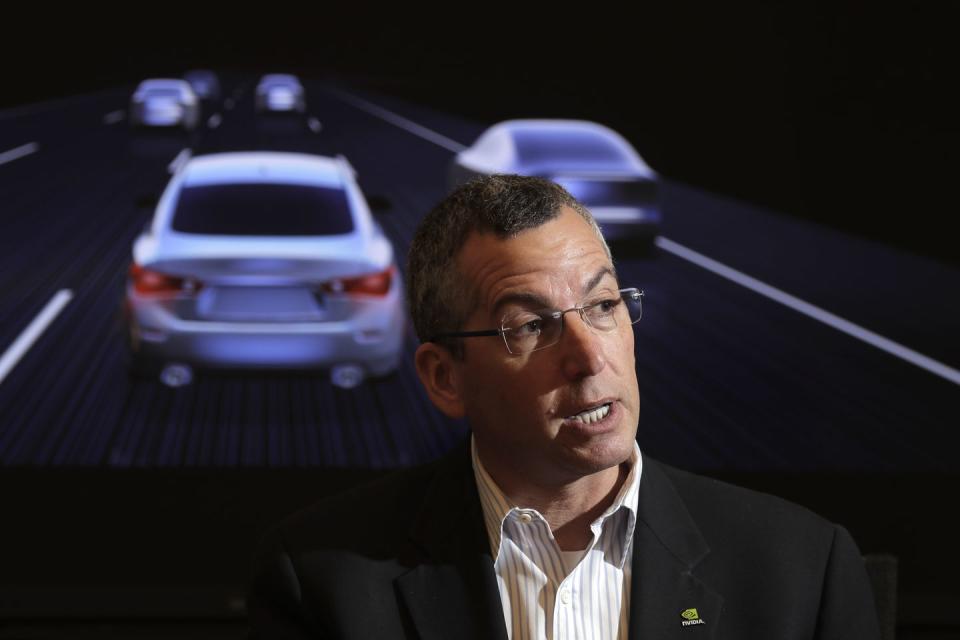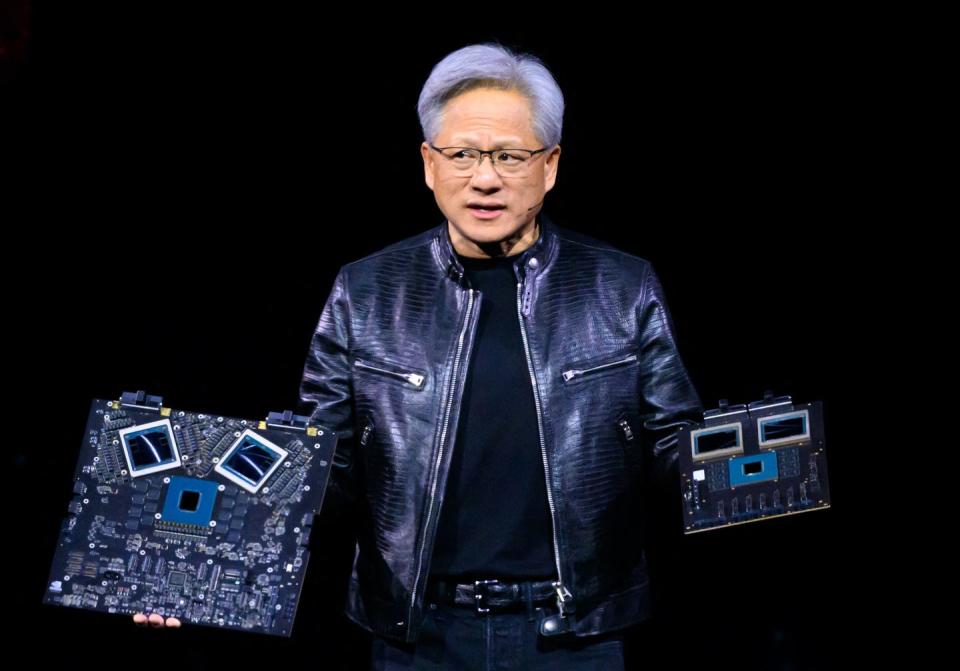How NVIDIA Puts Artificial Intelligence in Your Car or Truck

NVIDIA is peddling a type of generative artificial intelligence that can re-create an intersection virtually and add it to hundreds of different intersections in its “mind” for future reference.
NVIDIA stock price has nearly doubled since January—now approaching $1000 per share—with a market cap of $2.3 trillion, more than four times that of Tesla.
Major customers for NVIDIA include Mercedes-Benz and its MBUX infotainment system, Jaguar Land Rover, Volvo, Polestar, Lucid, and robotaxis from Amazon’s Zoox and General Motors’ Cruise.
Imagine your self-driving car dabbing its brakes—lifting throttle if it’s an EV—as its front-facing camera spots a stop sign. The car’s graphics processing unit (GPU) doesn’t just call up stored images of various stop signs to understand what that red octangle is trying to tell it.
Rather, it is re-creating the intersection and adding it to hundreds of different intersections in its “mind” so it can understand such intersections in their various permutations.
That’s generative artificial intelligence of the type NVIDIA is peddling to great effect lately. It’s the difference between AI in your car and the garden variety machine learning “self-driving” robotaxis use in a few urban pockets around the country, explained Danny Shapiro, vice president of automotive for NASDAQ’s hottest company, NVIDIA.
It’s the sort of difference that will geek you out if you’re a generative AI enthusiast and maybe will freak you out if you’re the sort of driving enthusiast who feels dubious about autonomous vehicles in the first place.
Thanks to major buzz in recent weeks, NVIDIA stock price has nearly doubled since January—now approaching $1000 per share—with a market cap of $2.3 trillion, more than four times the market cap of Tesla.
Shapiro spoke before the Automotive Press Association via Zoom Wednesday as NVIDIA held its stock price-enhancing 2024 GTC (graphics processing unit technology conference) at the San Jose Convention Center, led by CEO and founder Jensen Huang and featuring its new Blackwell computer chip architecture, named for University of California-Berkeley mathematician David Harold Blackwell.

NVIDIA’s automotive unit is “still a single-digit” percentage of the company, Shapiro said. The Detroit three are not major customers, yet, though they do use NVIDIA’s data center services, he said.
“Years ago when I came to Detroit, nobody knew who I was, or wanted to meet,” Shapiro said.
Huang considers NVIDIA-style data centers the factories of the future, and in fact, laying out a factory is one of the tasks its AI platform can perform. The company envisions modern robots carrying such heavy car parts as door panels for the line worker to the proper workstation—no more heavy, violent robots separated from factory workers by cages.
NVIDIA chips already have made their way into some luxury and high-tech vehicles. Major customers include Mercedes-Benz and its MBUX infotainment system, Jaguar Land Rover, Volvo, Polestar, Lucid, and robotaxis from Amazon’s Zoox and General Motors’ Cruise.
But NVIDIA chips might not make their way into entry-level hatchbacks any time soon.
“We’re focused on delivering the best products, hardware, and software we can do,” Shapiro said. “We’re not making commodity chips.”

NVIDIA AI also is for designers and engineers and for new vehicle configuration, allowing consumers to envision their next model in specific color and trim and in their driveways or along a favorite winding road.
Designers and engineers can lower or widen a new model by one foot and “test” variations in an AI wind tunnel more accurately and more efficiently than clay models in the real space, according to Shapiro.
APA President Michael Wayland asked, should automakers be concerned?
No, Shapiro replied, NVIDIA is not about to pull an Apple, Google, or Amazon.
“We view ourselves as an engineering partner,” he said. “The automaker builds their software on top of what we do.”
After all, he said, NVIDIA got its start “on the video game side. We don’t make the video games.”

 Yahoo Autos
Yahoo Autos 